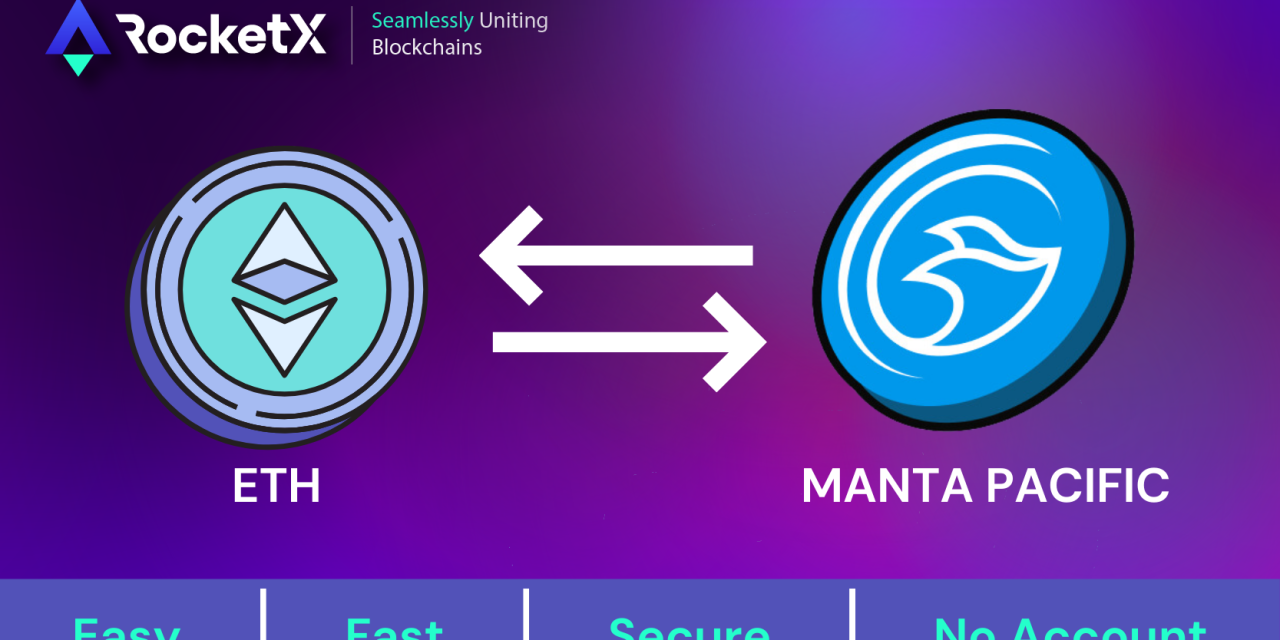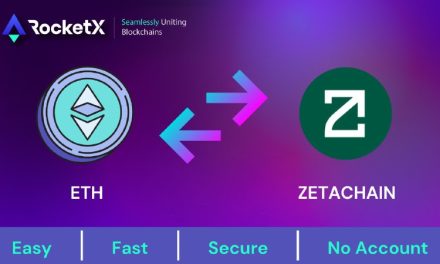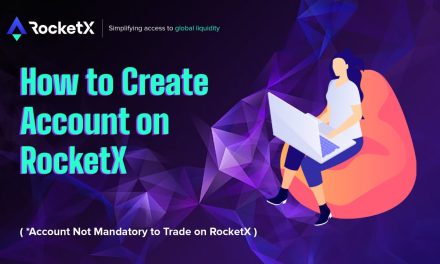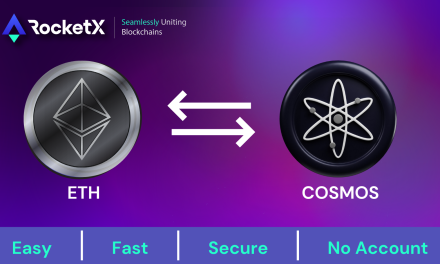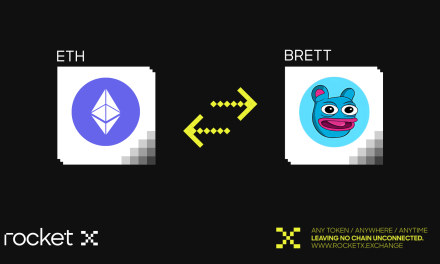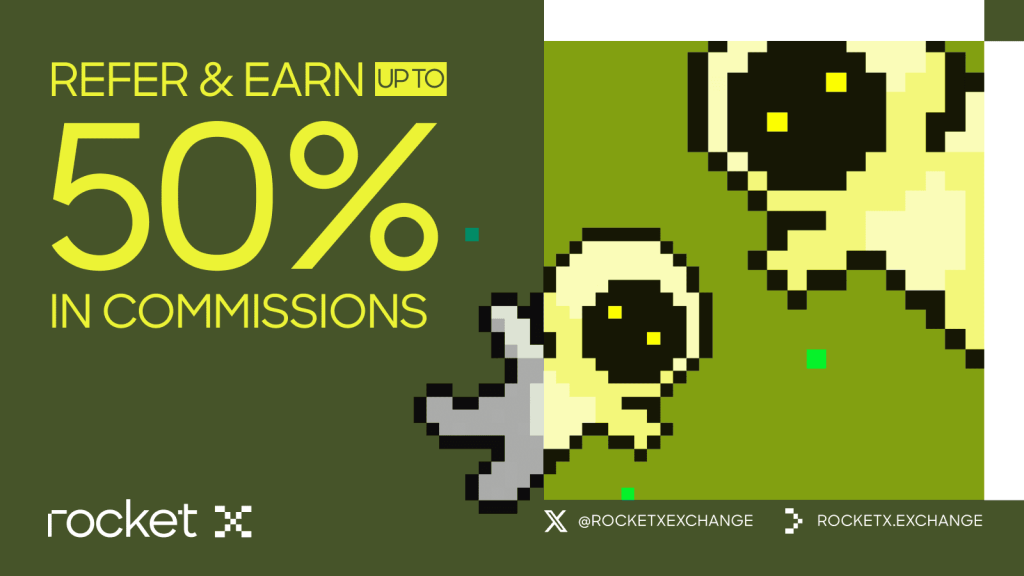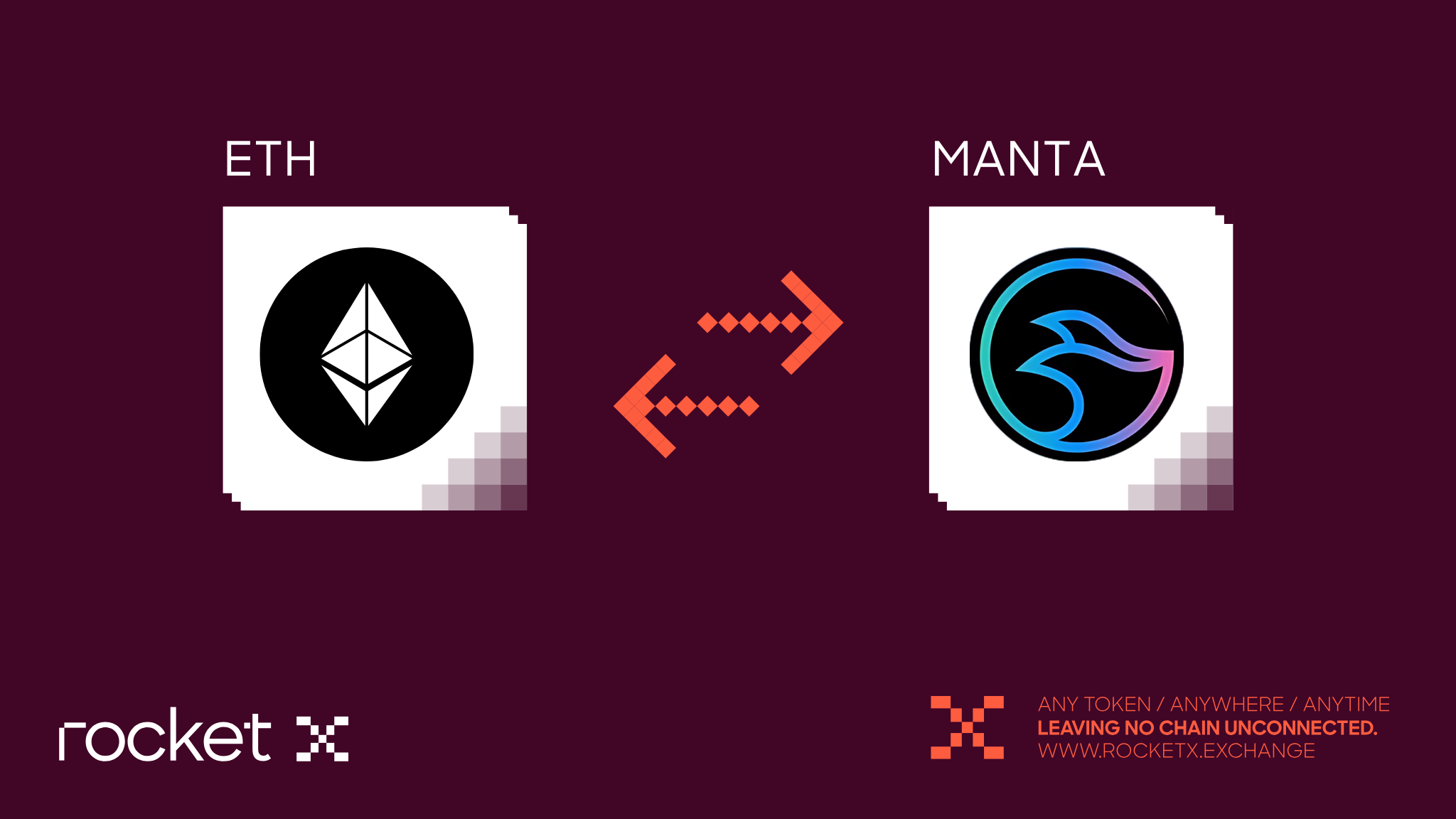
Introduction to Manta Network
In the evolving world of blockchain technology, addressing the dual challenges of privacy and scalability is crucial. Manta Network is making significant strides in these areas. Launched in 2020 by Victor Ji and Shumo Chu, with Kenny Li as COO, this platform is designed to enhance privacy within decentralized finance (DeFi) solutions. It comprises two major components: Manta Pacific and Manta Atlantic.
Manta Pacific operates as a Layer 2 solution built on Ethereum, offering a scalable and cost-efficient environment for zero-knowledge (ZK) applications. It simplifies the integration of privacy features using existing Ethereum tools. Conversely, Manta Atlantic is a Layer 1 chain on Polkadot, focusing on programmable identities and credentials through zkSBTs (Zero-Knowledge Soulbound Tokens). This approach boosts performance and security, adding to the overall robustness of the Manta ecosystem.
Supported by major investors such as Binance Labs and Polychain Capital, this platform is poised to revolutionize the future of Web3 applications. In this guide, we’ll delve into how Manta Pacific works, explore the Manta Token and its future potential, and provide practical insights on bridging assets, swapping tokens, and choosing the best wallets for Manta Network tokens. Join us as we uncover how Manta Network is paving the way for the future of Web3.
How Manta Pacific Works
Manta Pacific is a Layer 2 scaling solution for Ethereum that enhances the deployment of ZK applications. Its modular architecture uses Celestia for data availability (DA), which helps lower transaction costs and improve scalability. This setup leverages advanced technologies like 2D Reed-Solomon erasure coding and Namespaced Merkle Trees (NMTs).
The platform is fully compatible with the Ethereum Virtual Machine (EVM), allowing developers to build and deploy ZK applications using Solidity. Manta Pacific’s Universal Circuits simplify the integration of privacy features into Ethereum-based projects. It also employs zkEVM technology, which supports efficient and scalable computations for a variety of privacy-focused applications. This combination of modular design, EVM compatibility, and advanced ZK technology ensures a high-performance, developer-friendly environment.
Manta Token: Key Details and Uses
Overview
The Manta Token (MANTA) is the native utility token of the network, playing a central role within the ecosystem. With an initial supply of 1 billion tokens, MANTA supports both Manta Pacific and Manta Atlantic.
Key Functions
- Governance: Token holders can vote on significant network decisions, influencing the development of both Manta Pacific and Manta Atlantic.
- Staking: Staking MANTA helps secure the network and provides rewards for participants.
- Network Fees: MANTA is used to pay transaction fees on the Manta Atlantic network.
Tokenomics and Distribution
- Initial Supply: 1 billion tokens.
- Minting Rate: 2% annually starting January 30, 2024.
- Allocation: Includes public sales, airdrops, ecosystem incentives, and funds for strategic investors, the team, and advisors.
The token aims to enhance the network’s scalability and functionality, driving the future of decentralized applications with strong privacy features and efficient operations.
Future Potential
The Manta Token holds considerable promise due to its role in powering and governing the ecosystem. As Manta Pacific and Manta Atlantic continue to evolve, the value of MANTA may rise with the increased adoption of ZK applications and scalable solutions. Its utility in governance, staking, and fee payments boosts its demand. Integration across Ethereum and Polkadot ecosystems positions it as a significant asset in the decentralized landscape. With ongoing developments and strategic investments, MANTA is well-positioned to advance privacy and scalability in Web3.
How to Bridge or Convert Assets to the Manta Network
To acquire MANTA tokens or other assets on the Manta Network, you must first bridge your existing assets onto the network. This process involves transferring assets from one blockchain to Manta Network, enabling you to interact with the network’s ecosystem. Below are the detailed steps you need to follow
- Access RocketX Exchange
- Visit the RocketX Exchange website.
- Connect Your Wallet
- Click “Connect Wallet” and link your preferred wallet (e.g., MetaMask, Trust Wallet).
- Select Network and Tokens
- Source Network: Choose the network from which you want to convert your assets. For this guide, we use the Ethereum network.
- Destination Network: Select Manta Pacific network and Manta token.
- Choose Assets: Select the assets to bridge (e.g., ETH, USDC). In this guide, we are using ETH.
- Specify Amount: Enter the amount to bridge and review applicable fees.
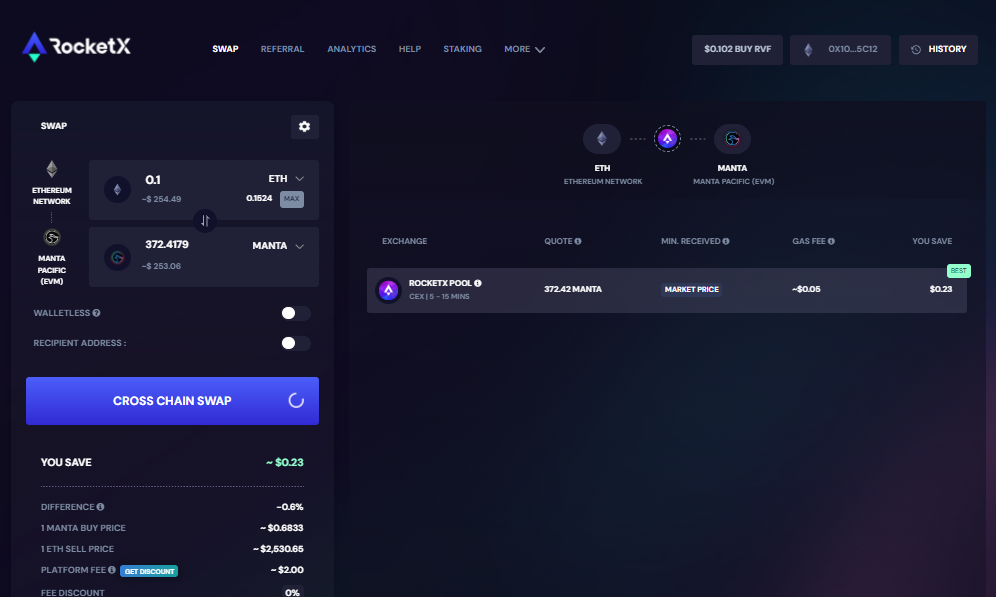
4. Confirm and Initiate the Process
-
- Review Details: Ensure all information is correct, including fees and destination addresses.
- Initiate Bridging: Click on Cross Chain Swap, confirm the transaction in your wallet, and monitor its progress through RocketX.
Swapping Tokens on the Network
After bridging your assets, you can initiate the token swap process by following these steps:
1. Access RocketX Exchange
Visit the RocketX Exchange website to begin the token swap process.
2. Connect Your Wallet
Ensure that your wallet is connected to Manta Pacific. This will allow you to access and manage your assets for the swap.
3. Select Tokens
Choose the specific tokens you want to swap from the available options.
4. Enter the Amount
Specify the precise amount of the tokens you wish to swap in the designated field.
5. Review and Confirm
Carefully review the swap details, including the tokens and the amount, and then confirm the transaction to initiate the swap.
Best Wallets for Storing Tokens on Manta Network
When it comes to securing your tokens, it’s crucial to select the right wallet. Here are some options to consider, each with unique features and strengths:
1. OKX Wallet:
The OKX Wallet is known for its powerful features and supports multi-chain operations. It seamlessly integrates with Web3 dApps, providing users with a versatile platform for managing their tokens.
2. Bitget Wallet:
With support for over 90 chains, the Bitget Wallet prioritizes strong security measures to safeguard users’ assets. It features an integrated decentralized exchange (DEX) and NFT marketplace, catering to those interested in trading and investing in digital assets.
3. Trust Wallet:
The Trust Wallet offers a user-friendly interface and provides robust security measures for managing ERC-20 tokens, ensuring a seamless and secure experience.
4. Math Wallet:
Supporting over 100 chains, the Math Wallet facilitates cross-chain token bridges and offers multi-chain dApp storage. This functionality enables users to explore diverse blockchain ecosystems and access various decentralized applications.
Each of these wallets provides unique features, allowing token holders to choose the best option for their specific needs.
Conclusion
Manta Network is leading the transformation of the blockchain landscape by prioritizing privacy and scalability. To fully harness the power of this network, bridging assets to Manta Pacific is essential. As Manta Network continues to expand, it’s set to play a pivotal role in shaping the future of Web3. Stay connected with RocketX on social media for more in-depth insights and updates.

